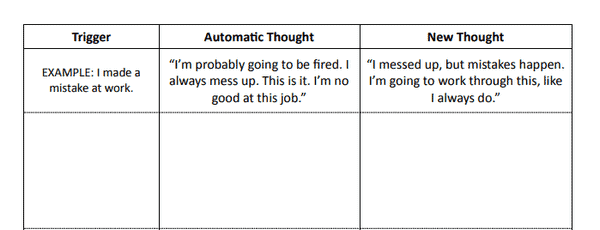Recently, I found an image on social media that I loved and it made me think of automatic negative thoughts. It was an old photo of a woman who had a sign on her face that said, “Don’t you believe everything you think?”Wait a minute!
This is the heart of it. They never taught us that. At school, they explained a lot about the outside world, but little or nothing about the interior.
- If something comes to mind.
- And comes back.
- And comes back to the end.
- Ends up acquiring a certain connotation of reality for us.
- The problem is that many times it is nothing real.
- So it generates an unnecessary emotional discomfort.
- Fighting this intelligently means learning to identify the automatic negative thoughts that appear.
- In this way.
- Can we challenge them and change them later?Learn to control your thoughts to regain your well-being!.
“The work of thought is similar to drilling a well: the water is cloudy at first, but then it clears up. “Chinese Proverb
The reality is that our thoughts, that internal dialogue that we have with ourselves, shape how we feel and influence how we act, our appreciation of the situation affects how we interpret it and makes it live in one way or another emotionally.
Therefore, it is necessary to learn to identify automatic negative thoughts, that is, those that do not adapt to the situation and provoke very intense, lasting and / or recurrent emotions in relation to what is really happening to us, this type of cognitions are related to others that we have already exposed in other articles and that influence emotional discomfort: irrational beliefs and cognitive biases.
“There is nothing good or bad; Is it human thought that makes it look like this?-William Shakespeare-
Distorted (or automatic negative) thoughts are specific to each and content varies from topic to topic, i. e. they are specific to each person. In addition, they are discreet and spontaneous: they appear inadvertently and it is difficult to identify them as a threat from their first appearance, we finally believe in them without prosecuting them and generally see them as obligations (with ourselves or others).
Now that we know what they are, to learn to identify automatic negative thoughts, we need to know the different forms they take, the reality is that we are generating them all, to a greater or lesser degree, and, as explained above, we cannot control their beginning, so we will work to try to challenge and change them.
To do this you have to locate them as soon as possible, it is not easy, but it is possible. The idea is to learn to balance what you think, to take a step back and to doubt the truth, that is, we have to learn to be realistic. The types of distorted thoughts we usually have are:
“If people heard our thoughts, few would escape being locked up like crazy” – Jacinto Benavente-
To understand how far the influence of these seemingly harmless thoughts goes, let’s take an example. After a meeting, a colleague said, “I liked the way you played at the meeting, even though you seemed a little nervous. “is that in this situation, do we think? Oh, my God, I’m the worst, you think I’m a mess?I always do everything wrong! I’m sure they won’t want me to talk again at meetings.
We see here a little bit of everything: widening the negative and minimizing the positive (we don’t even realize that he liked the way we presented ourselves), diatomical thinking (?Do I always do everything wrong, am I the worst?there are more degrees in the middle), arbitrary inference (?I’m sure you don’t want me to say any more?), the divination of thought (?You’ll think I’m a mess?), etc.
It is not easy, but if we commit ourselves to identify the automatic negative thoughts that appear, as we did in the example, we will witness the whole process: the one in which we make a mountain with a grain of sand. essential to learn to control our thoughts and, therefore, our emotions.

